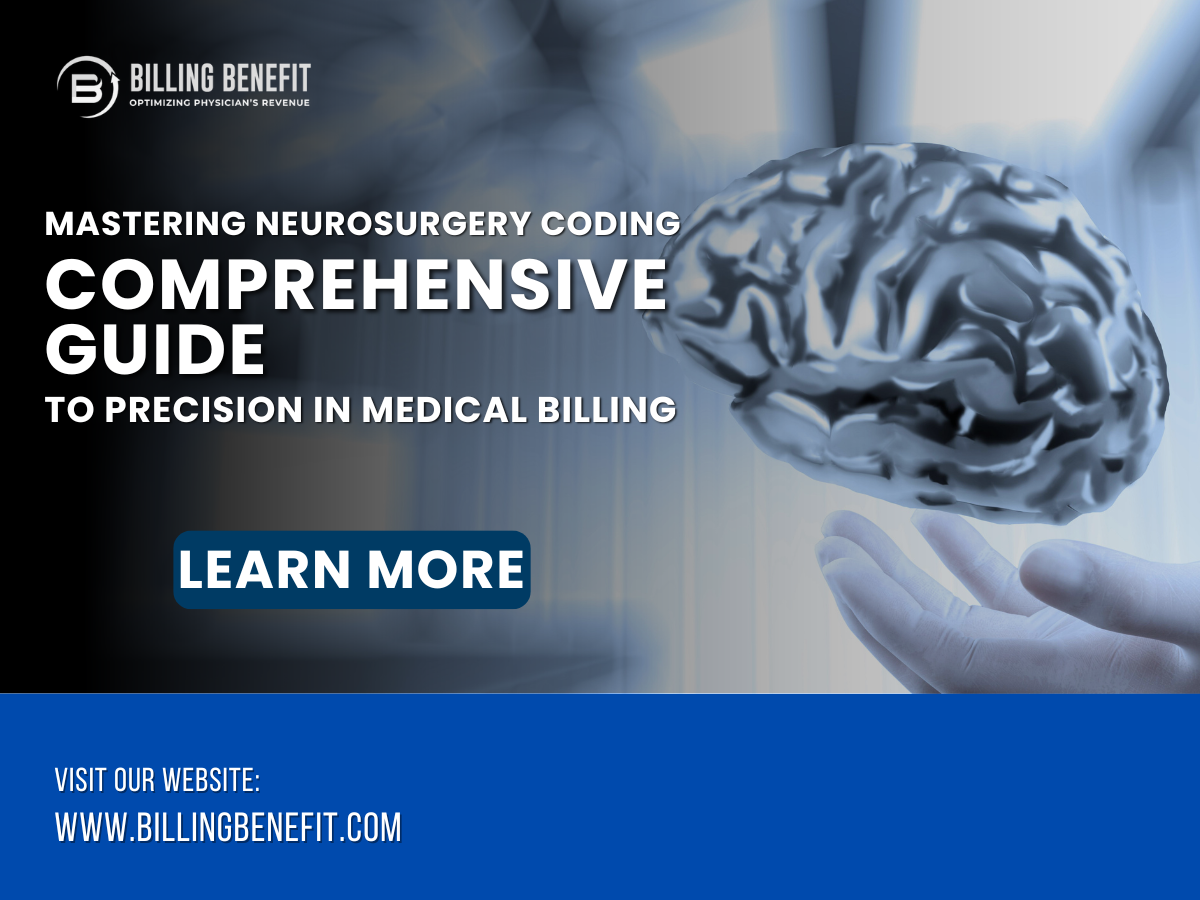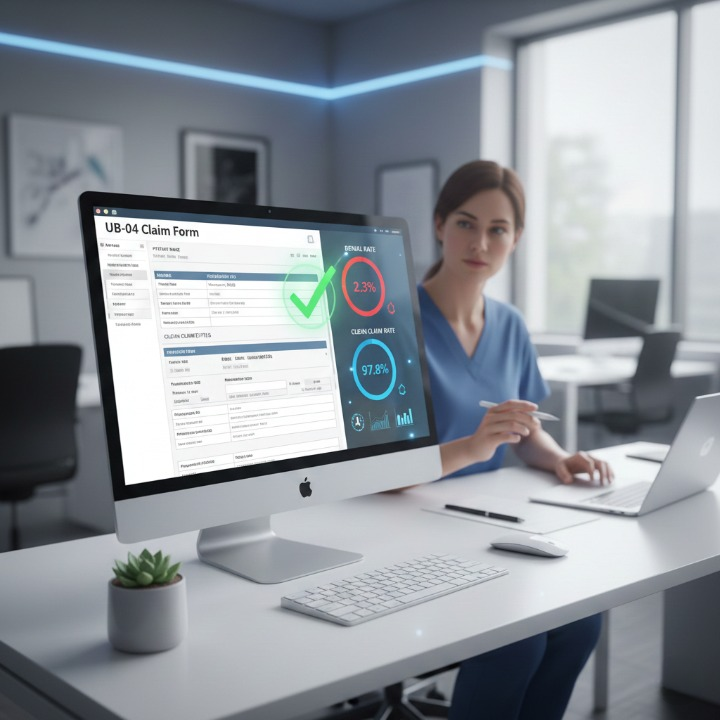In the ever-evolving field of medical coding, few areas are as intricate and demanding as neurosurgery coding. The precision required to accurately code neurosurgical procedures can directly impact the reimbursement process, affecting both healthcare providers and patients. Whether you are a seasoned medical coder or new to this specialization, mastering neurosurgery coding is crucial to ensuring that services are billed correctly and that healthcare facilities receive appropriate compensation for their work.
In this comprehensive guide, we will explore the complexities of neurosurgery coding, breaking down the nuances of the various Current Procedural Terminology (CPT) codes, and offering strategies for mastering this challenging aspect of medical billing.
Understanding the Importance of Neurosurgery Coding
Neurosurgery coding is a specialized area within medical coding that requires an in-depth understanding of both surgical procedures and the anatomy of the nervous system. Accurate coding is essential not only for reimbursement purposes but also for maintaining compliance with healthcare regulations. Errors in neurosurgery coding can lead to significant financial losses, denied claims, and potential legal issues for healthcare providers.
The complexity of neurosurgery coding stems from the wide range of procedures involved, including brain surgery, spinal surgery, and peripheral nerve surgery. Each of these procedures has its own set of codes, and the coder must be able to distinguish between similar procedures to select the correct code. Additionally, neurosurgery often involves multiple procedures performed in a single session, which adds another layer of complexity to the coding process.
Key to Mastering Neurosurgery Coding You Need to Know
To master neurosurgery coding, it is essential to be familiar with the most commonly used CPT codes in this field. Here are some key codes that every neurosurgery coder should know:
- CPT 61510-61512: These codes are used for craniotomy procedures for the excision of brain tumors. The specific code used depends on factors such as the location of the tumor and the approach used by the surgeon.
- CPT 63030-63035: These codes cover procedures for lumbar spine decompression, such as laminectomy, which is often performed to relieve pressure on spinal nerves.
- CPT 63685: This code is used for the insertion of a spinal neurostimulator pulse generator or receiver, a common procedure in pain management.
- CPT 64721: This code applies to carpal tunnel release surgery, which involves decompressing the median nerve in the wrist.
Understanding the nuances of these codes, including when to use them and how to apply modifiers, is critical for accurate billing and reimbursement.
Strategies for Mastering Neurosurgery Coding
Given the complexities of neurosurgery coding, developing a robust strategy is essential for success. Here are some tips to help you master this challenging aspect of medical coding:
1. Stay Current with Coding Updates
The authorities regularly update neurosurgery CPT codes to reflect new surgical techniques and medical advancements.Staying current with these updates is crucial for accurate coding.You can achieve this by subscribing to coding newsletters, attending coding workshops, and regularly reviewing coding manuals.
2. Understand the Anatomy and Surgical Techniques
A deep understanding of neuroanatomy and surgical techniques is essential for accurate coding. Coders should familiarize themselves with the anatomy of the brain, spine, and peripheral nerves, as well as the common surgical procedures performed on these areas. This knowledge will help you differentiate between similar procedures and select the correct CPT code.
3. Use Modifiers Correctly
Modifiers play a crucial role in neurosurgery coding, as they provide additional information about the procedure. For example, surgeons use modifier -51 to indicate multiple procedures performed during the same surgical session, while they use modifier -62 when two surgeons work together on a complex procedure. Understanding when and how to use these modifiers is essential for accurate billing.
4. Double-Check Documentation
Accurate coding starts with accurate documentation. Before assigning a CPT code, thoroughly review the surgeon’s notes to ensure that they document all aspects of the procedure. Missing or incomplete documentation can lead to coding errors and denied claims.
5. Seek Expert Guidance
Neurosurgery coding is a complex field, and even experienced coders can benefit from expert guidance. Consider seeking mentorship from more experienced coders or consulting with neurosurgeons to gain a deeper understanding of the procedures you are coding.
6. Utilize Technology and Coding Software
Advanced coding software can be a valuable tool in neurosurgery coding. These programs assist with code selection, ensuring that you use the most accurate and up-to-date codes. Additionally, they can help flag potential coding errors and suggest appropriate modifiers.
Common Challenges in Neurosurgery Coding
While mastering neurosurgery coding is achievable, coders often encounter challenges that can make the process more difficult. Here are some of the most common challenges and how to overcome them:
1. Complex Surgical Procedures
Neurosurgery often involves highly complex procedures that can be difficult to code. For example, a single surgical session may involve multiple procedures, such as a craniotomy, brain tumor excision, and cerebrospinal fluid shunt placement. Coders must be able to accurately identify and code each procedure, which requires a deep understanding of both the surgical techniques and the CPT codes.
2. Documentation Variability
The quality of surgical documentation can vary significantly between providers, which can make coding difficult. Some surgeons may provide detailed notes that make coding straightforward, while others may provide minimal documentation, leaving the coder to fill in the gaps. In these cases, it is essential to work closely with the surgical team to ensure that all procedures are documented accurately.
3. Keeping Up with Coding Changes
As mentioned earlier, CPT codes are regularly updated, and it can be challenging to keep up with these changes. To stay current, coders should regularly review coding manuals, attend training sessions, and participate in coding forums.
4. Dealing with Denied Claims
Denied claims can be a significant challenge in neurosurgery coding. Common reasons for denial include coding errors, missing documentation, and incorrect use of modifiers. To minimize denied claims, it is essential to review all codes and documentation carefully before submitting a claim. Additionally, having a process in place for appealing denied claims can help ensure that your healthcare facility receives the reimbursement it deserves.
The Future of Neurosurgery Coding
As the field of neurosurgery continues to evolve, so too will the coding practices that support it. Advances in medical technology, such as minimally invasive surgical techniques and robotic surgery, will likely lead to the development of new CPT codes and coding guidelines. Additionally, the increasing use of electronic health records (EHRs) and coding software will continue to shape the future of neurosurgery coding.
To stay ahead in this dynamic field, coders must be committed to ongoing education and professional development. By staying current with coding updates, enhancing your knowledge of neuroanatomy and surgical techniques, and leveraging technology, you can ensure that you remain at the forefront of neurosurgery coding.
Mastering Neurosurgery Coding: Final Thoughts
Mastering neurosurgery coding is no small feat. It requires a deep understanding of the nervous system, surgical procedures, and the intricacies of CPT codes. However, with the right strategies and a commitment to ongoing education, you can become proficient in this challenging but rewarding field.
Accurate coding is essential for ensuring that healthcare providers receive the reimbursement they deserve and that patients receive the care they need. By mastering neurosurgery coding, you can play a crucial role in supporting the financial health of your healthcare facility while contributing to the overall quality of patient care.
Whether you are just starting out in medical coding or are looking to specialize in neurosurgery, this guide provides the foundation you need to succeed. Remember, the key to mastering neurosurgery coding lies in your commitment to learning, attention to detail, and dedication to accuracy.
FAQs
What is neurosurgery coding?
Neurosurgery coding involves assigning CPT codes to procedures related to the brain, spine, and peripheral nerves. Accurate coding is crucial for billing and reimbursement.
What are some common neurosurgery CPT codes?
Some common neurosurgery CPT codes include 61510-61512 for craniotomy, 63030-63035 for lumbar spine decompression, and 63685 for spinal neurostimulator insertion.
Why is neurosurgery coding challenging?
Neurosurgery coding is challenging due to the complexity of the procedures involved and the need for precise documentation. Coders must be familiar with neuroanatomy and surgical techniques.
How can I improve my neurosurgery coding skills?
You can improve your neurosurgery coding skills by staying current with coding updates, understanding anatomy, using modifiers correctly, double-checking documentation, and seeking expert guidance.
What role do modifiers play in neurosurgery coding?
Modifiers provide additional information about a procedure, such as indicating multiple procedures or the involvement of multiple surgeons. Correct use of modifiers is essential for accurate coding.
What is the future of neurosurgery coding?
The future of neurosurgery coding will likely involve new codes and guidelines due to advances in medical technology, as well as increased reliance on










